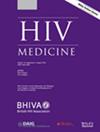The incidence of metabolic syndrome (MetS) in people living with HIV is significantly higher than in people without HIV. MetS is not only a major driver of cardiovascular disease (CVD) but is also closely related to the development of chronic kidney disease (CKD). The aim of this study was to investigate the prevalence of and risk factors for MetS and to further understand the degree of damage to target organs.
This was a cross-sectional descriptive study conducted at Chongqing Public Health Medical Center, China. Information was collected via questionnaire survey, physical examination, and laboratory tests. We used the China Diabetes Society guidelines to define MetS. Pooled cohort equations were calculated to compare CVD risk in the next 10 years in people living with HIV aged ≥40 years with or without MetS. We used Student's t-test, the chi-squared test, Fisher's exact test, binary logistic regression, and multiple linear regression in the statistical analysis.
The study included 979 people living with HIV, including 13 who have experienced CVD, receiving antiretroviral therapy (ART). The median age was 43.0 years, 20.9% were female, and the median ART time was 45.0 months. The prevalence of MetS was 33.9%. The components of MetS criteria were hyperglycaemia (50.4%), hypertriglyceridaemia (48.4%), hypertension (46.8%), low concentrations of high-density lipoprotein cholesterol (28.2%), and abdominal obesity (25.0%). Higher body mass index (odds ratio [OR] 1.266; 95% confidence interval [CI] 1.203–1.333), higher total cholesterol (OR 1.267; 95% CI 1.011–1.588), high alcohol consumption (OR 1.973; 95% CI 1.009–3.859), and family history of diabetes (OR 1.726; 95% CI 1.075–2.770) were independent risk factors for MetS. Compared with the non-MetS group, the MetS group had a higher rate of urine albumin (23.8% vs 14.8%, p = 0.001), and the estimated glomerular filtration rate <90 mL/min/1.73 m2 (18.37% vs. 12.8%, p = 0.020) and β2-microglobin (p = 0.004) increased more markedly in the MetS group. Regarding the risk of developing CVD events in the next 10 years, 38.5% of those in the MetS group were at high or very high risk, which was significantly higher than in the non-MetS group (p < 0.001). In addition, age (p < 0.001) and sex (p = 0.002) are independent risk factors for developing CVD events in the next 10 years.
The prevalence of MetS in people living with HIV on ART is high in Chongqing, China. Risk factors for the development of MetS are high alcohol consumption, family history of diabetes, higher body mass index, and higher total cholesterol levels. In addition, MetS is associated with a risk of CKD and the incidence of 10-year CVD.


